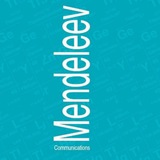Platinum(IV) prodrugs with heavy-atom-free BODIPY in axial position: instant photoactivation, enhanced biosafety and improved phototoxicity
D. V. Spector🏛 , A. O. Zharova🏛 , Yu. A. Isaeva, M. F. Vokuev🏛 , I. A. Rodin🏛 , V. A. Roznyatovsky🏛 , Yu. K. Grishin🏛 , E. K. Beloglazkina🏛 , O. O. Krasnovskaya🏛
https://doi.org/10.71267/mencom.7776
Volume 35, issue 5, pages 595–597
D. V. Spector
https://doi.org/10.71267/mencom.7776
Volume 35, issue 5, pages 595–597
Two new photoactivable PtIV prodrugs bearing heavy-atomfree BODIPY in the axial position and differing in the linker length were prepared using CuAAC cycloaddition. Under 530 nm green light, both prodrugs produce singlet oxygen and are capable of a rapid cisplatin release in the presence of sodium ascorbate. Investigation of antiproliferative activity demonstrated excellent biosafety of these prodrugs, as well as outstanding phototoxicity under 530 nm low-dose green light.
Please open Telegram to view this post
VIEW IN TELEGRAM
👍3❤2🔥2
Ceramic materials based on magnesium orthophosphate for biomedical applications
I. I. Preobrazhenskiy🏛 🏛 , D. V. Deyneko🏛 , A. M. Murashko🏛 , E. S. Klimashina🏛 , Ya. Yu. Filippov🏛 , P. V. Evdokimov🏛 🏛 , V. I. Putlayev🏛
https://doi.org/10.71267/mencom.7716
Volume 35, issue 5, pages 614–616
I. I. Preobrazhenskiy
https://doi.org/10.71267/mencom.7716
Volume 35, issue 5, pages 614–616
Magnesium orthophosphate, Mg3(PO4)2, was synthesized via the solid-phase method, the ceramic material based on Mg3(PO4)2 was obtained and the physicochemical properties of the ceramic were studied. The dependence of the changes in the microstructure and density on the sintering temperature in the range of 900 and 1250 °C was investigated.
Please open Telegram to view this post
VIEW IN TELEGRAM
👍5❤3🔥2
Non-covalent interaction of 2,6-dialkyl-substituted BODIPY with human serum albumin
P. S. Bocharov🏛 , A. A. Ksenofontov🏛 , M. B. Berezin🏛 , E. V. Antina🏛
https://doi.org/10.71267/mencom.7740
Volume 35, issue 5, pages 598–601
P. S. Bocharov
https://doi.org/10.71267/mencom.7740
Volume 35, issue 5, pages 598–601
The possibility of using highly hydrophobic BODIPY dyes as promising fluorescent markers for hydrophobic regions of proteins has been proven. Using spectral methods and molecular docking for 1,3,5,7-tetramethyl-substituted BODIPY and its seven derivatives bearing alkyl groups of various lengths at the 2,6-positions, the effect of their hydrophobicity on the affinity for human serum albumin (HSA) was determined. It was found that all the investigated dyes form stable supramolecular complexes with HSA, while the nature of the fluorescence response of BODIPY changes from quenching to enhancement due to an increase in the length of the alkyl substituents.
Please open Telegram to view this post
VIEW IN TELEGRAM
❤5👍4🔥4
